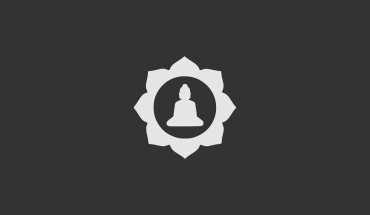The question whether to practise samatha or vipassana comes up again and again.
 In the early days of the Burmese Vipassana movement long debates were waged on which approach would be the correct one (samatha || vipassana, that is).
In the early days of the Burmese Vipassana movement long debates were waged on which approach would be the correct one (samatha || vipassana, that is).
This question seems like a non-question. The Buddhas emphasis on the importance on samatha is clear while his whole teaching revolves around insight or ‘knowing and seeing’ as it was coined in the early days of his teaching.
So, being a joint vehicle, both the serious Buddhist concentration meditator and the enthusiastic vipassana meditator will meet at the same place in their meditation eventually – albeit from different routes.
However, while the uniqueness of the vipassana method is based on the simple fact that its discovery and explanation is only found in a Buddha-originating context – the attempt to develop strong insight without necessary groundwork in samatha meditation will simply prolong the journey (let alone what a lack in virtue might do in this regard…)
Below an excerpt from a recent chat which came across a similar topic and might shed some ideas on this subject:
kalyanamitta: … and these aggregates are still just concepts
me: exactly…they are
that is why also the jhana are, in fact, inferior
to any vipassana insight
everything else keep syou in the realm of rebirth…which
kalyanamitta: really?
me: in other words means…it leaves you with nothing
kalyanamitta: the buddha used jhana to see the three true knowledges, no?
me: because, even if you were Warren Buffet and owned the planet…in 2 billion years from now, it would be nothing more than adream
kalyanamitta: how is that different.
?
me: he did not realize nibbana because of the jhanas
he realized nibbana because of the 4 noble truth..which was his way of doing vipassana
kalyanamitta: no, i know, but he used them to make his mind workable etc…
me: but of course he prepared himself using the jhanas
it is easier with strong concentration…vipassanas view will be sharp and crisp right away
kalyanamitta: so, if my mind were to get the fourth jhana i could see the same things?
me: yes….he did
no
not necessarily
kalyanamitta: why not?
he said, jhanas then three true knowledges
me: if you are in the 4th jhana, your concentration is pretty darn sharp…but you need to archieve a feat of insight
kalyanamitta: it sounded progressive
me: yes, and it is
but not conditioned
not this causes that
but this is a support for that
kalyanamitta: yeah, he directed his mind to the three true knowledges
me: exactly
you got it
that is the critical thing there
kalyanamitta: so, why can’t we do that?
me: we do
actually that is what you do
kalyanamitta: why do we have to label everything?
me: in each moment, where you note a thought, or sound
you direct your direct knowledge to suffering
to the five groups of grasping
kalyanamitta: i don’t get it.
me: okay,
let me try
you know the 5 groups, right?
kalyanamitta: cause i don’t see my past lives or kamma or four noble truths
when i see my leg hurts and note it lol
me: okay, just one sec here
lets take the leg
kalyanamitta: yes, form feelings perception mental formations and consciousness
me: but do you know what they mean
apply them on the moment when you feel your leg hurts
where are your 5 groups there?
kalyanamitta: sure.
it all happens so fast
i know that there is form, or a mind made form, and that there is feeling, and then it is perceived, and then a thought occurs and then i’m consciouss about all this
that’s all i got
lol
me: okay, let me help you
and this is just a sample
to show you that this is suffering we do observe in this little vipassana exercise, which actually is not little but the application of direct knowledge itself
so, there is the leg, which in reality is some tangible object
we dont know that it is a leg
there is something tangible
then a feeling, lets say a painful
then a perception, a numb, deep rudimentary mental perception of “the leg”
that is perception.
kalyanamitta: ok
me: then comes sankhara, which is the “imagination” of it, the “putting it into perspective”
kalyanamitta: mental proliferation or fabrication
which layer 1-7?
me: this adds the relationship to it, like “there is my leg, beneath me, below..”
🙂
kalyanamitta: 🙂
me: we have only layer 1-5
kalyanamitta: lol
indeed
me: and all of this is nested in consciousness, which in pali just means “the knowing”
so these 5 are just categorizations
kalyanamitta: yeah
me: the Buddha used for us to capture and better understand what quickly occurs in split seconds in each moment
that is where he directed his attention to
and he started simply recognizing it
kalyanamitta: so, where is rebirth, for example, four noble truths. i don’t get it from the labeling, the connection. i don’t get it
me: now the Buddha did this based on the jhanas which i entered before
but thousands of his listeners in his sermons did not
kalyanamitta: ask me to do by labeling you mean, right?
me: they attained to all stages of enlightenement by applying this direct knowledge
while listening to him
they sure did not have all jhanas developed
yes, the labeling
because what the labeling does is it stops your minds operations short
like a grain of sand in a machine
kalyanamitta: if they didn’t have jhanas, how can the regular mind with all the defilements and hindrances see anything of unbinding?
me: into prolongs, artificially, the whole perception-proliferation-life creating machin our mind is made of
kalyanamitta: ok
me: which allows us to break this whirlpool of
consciousness on the one side and
name (feeling, perception, imagination) and form (reall physical world) on the other hand
kalyanamitta: just by paying attention is what your saying?
me: once they break apart, which will happen in your vipassana the whole world breaks apart
yes
amazing isnt it
that is what the Buddha over and over calls
“to see it as it is” (yathabhuta, nyanadassana, yoniso manasikaro)
“direct knkowledge”
etc etc
so that is what he called in the early days “vipassana”
that term was introduced later in his life… that is my personal believe…so the term appears in the suttas
and the quintessence of this practice is all over the suttas…just the ‘coinage’ is different and of course the practice of adjoining concentration meditation was a given.
kalyanamitta: i heard the same
me: anyway…so what you do is quite extraordinary and the Buddhas system
kalyanamitta: maybe by buddhaghosa
me: well, there are only a view suttas which use vipassana but there are
maybe some of his pupils started using that term
no problem…was long as we understand what this is all about
kalyanamitta: ok
me: my feeling is, that many people seem to know what vipassana is
but actually have no clue what this really really is all about
so, even if the buddha used the rocket lauchpad of jhana
nobody has to
even listening to his sermons was enough for most to become stream enterers
because they got to some first intrinsic insight using his direct seeing approach and experienced their “first nibbana”
if you will
kalyanamitta: but he always says go practice jhana and not go practice labeling things
me: that is what i thought too, for many years
now i do know that it is not the case
did you ever read the Samyutta NIkaya
kalyanamitta: not the whole thing, no lol
did you?!
me: you get that impression if you read Majjhima…because there almost every sutta is about the approach (for monks! mind you)
the appraoch based on the 3 vijjas, with jhana and then vipassana
kalyanamitta: yes, and that makes sense to me
me: (oh yes, i did, in fact, read the sutta pitaka several times – it is not such a marvelous task as it may seem)
so, but if you go ahead and look at the Samyutta
kalyanamitta: i don’t believe you
me: especially
kalyanamitta: !
me: Khandha and Salyatana vaggas
almost every sutta is on vipassana
no mention of jhanas whatsoever
hundreds of suttas
all start like this
let me find one for you
kalyanamitta: then why would he say in the dhammapada that when one has jhana he is close to unbinding?
me: ah.too long
wait
kalyanamitta: yes, i’ve read similar ones before
me: because, from a pragmatic and just pragmatic standpoint, someone with strong jhana of course has it easier to apply his laser like attention to SEE what is going on
it will only take LONGER for the vipassana meditator to SEE the same things…but then again: a hindu yogi with deep 4th jhana will not see the rising and falling of the 5 groups of grasping just because his mind is so concentrated…
kalyanamitta: so, someone with my scatter mind is going to struggle lol
me: sure
and i am completely honest
but the jhanas alone and in themselves would never rescue you
you would still have to do vipassana at one point or the other
kalyanamitta: so it seems stupid not to get jhana but then i’m back to square one
me: that is why my teachers (and i was myself VERY eager to get to the jhanas first) talked me out of it and said: first vipassana after some initial samatha…make sure you make this life count
kalyanamitta: yes, but after!
it seems logical to a, master jhana, b, label things
me: but not necessarily the full blown mastery of the same. it makes sense that if you look at what is happening in your mind in the labelling fashion day in day out though from a samsara-freedom aspiring standpoint
kalyanamitta: what does strong vipassana mean?
me: (in a monastery setting that is 3 months)
kalyanamitta: oh
me: that you wil lbreak through A LOT of delusions and attachments
yes
day and (almost all) night
like in the time of the Buddha
so, it is still doable
now the question is, what do you pragmatically do from here
fight with the stupid hindrances and bad sourroundings to get to some unstable jhana for the next years
or you try to just train for better concentrationa nd then go for a REAL vipassana hard core retreat in a few years for 3 months
kalyanamitta: i don’t know.
me: or you do some “dry” vipassana with whatever concetntration you got for the next couple of years with definitely a lot of insights at the same time.. all viable options
kalyanamitta: is there peace in my mind from labeling things?
me: no, but from seeing the rising and falling of the six sense objects
that peace (eventually) will be final
kalyanamitta: but, what about in the meantime?
me: and labeling == stopping and seeing == realizing the start and end of sense objects == seeing them breaking down == disgusted == turning away == (eventually) nibbana
kalyanamitta: i guess
me: see, i see for your current “life” and time you got two alternative routes
either take it very slowly and do not expect anything big but steadily work on your concentration
kalyanamitta: ok
me: and then maybe plan ahead for some very serious multi-month vipassana retreat…there are lots of places some with good teachers too, where you can just do that
OR
use the concentration you have now and you might from time to time archieve (stumble over) using each of your free time for vipassana meditation at home with the intention to leave the jhanas alone, develop more insight, make your precious life count and also plan to do some strong vipassana whenever you life allows for it
kalyanamitta: i guess
me: OR: if you are really really obsessed with jhana first route, in a couple of years, when you have time for it, find a teacher for jhana practise and do that first but those teachers are rare also and you still have to add the insight job on top of it, which is what got you started in the first place 🙂
Know pali? This link might be for you:
Addon:
At the time of the Buddha, it seems, many of the “recluses” where doing some form of concentration anyways. Now of course instead of focusing on Indra, Agni or Varuna the Buddha pointed them to the development of insight, using what they got, clearing away any mysticism of concentrated states by a logical and rational clear-cut definition of meditative absorptions –
the jhanas – and pointing them towards the enlightened trick of clear unwavering self observation, satipatthana:
“Yā kho, āvuso visākha, cittassa ekaggatā ayaṃ samādhi; cattāro satipaṭṭhānā samādhinimittā; cattāro sammappadhānā samādhiparikkhārā. Yā tesaṃyeva dhammānaṃ āsevanā bhāvanā bahulīkammaṃ, ayaṃ ettha samādhibhāvanā”ti.
The one-pointedness of the mind, Brother Visakha, that is called concentration.
The four foundations/anchorages/pillars of remembering are the objects of concentration.
The four right efforts are the requisites of concentration.
And the repeated and habitual practice and development of these things, this is called “Development of concentration” . MN 44 [
pi] [
en]
In today’s Buddhist terminology though, the one-pointedness part would be looked at separately and understood as samatha or concentration meditation, whereas the second part, the vipassana-style meditation would be considered an insight meditation approach. In this paragraph above we see that this whole exercise was (yet) perceived as the development of concentration – calmness, concentration and eventually the witnessing power of unshakeable remembering “atthi kayo” (there is a body), “atthi vedana” (there is a feeling), “atthi citta” (there is a mind), “atthi dhammo” (there is a mind object) – to be the earliest form of insight meditation. The terminology wasn’t yet as frozen as it is today, after 2500 years, but unlike today, the people who spoke about it knew what they meant 🙂
In any case, from here, the next look would be the Salayatana and Khandha Samyutta of the Samyutta Nikaya to see how the early Vipassana instructions further developed and what parts of the instruction are more important than others.
Visited 1,261 times, 1 visit(s) today
Related
 In the early days of the Burmese Vipassana movement long debates were waged on which approach would be the correct one (samatha || vipassana, that is).
In the early days of the Burmese Vipassana movement long debates were waged on which approach would be the correct one (samatha || vipassana, that is).



6 comments